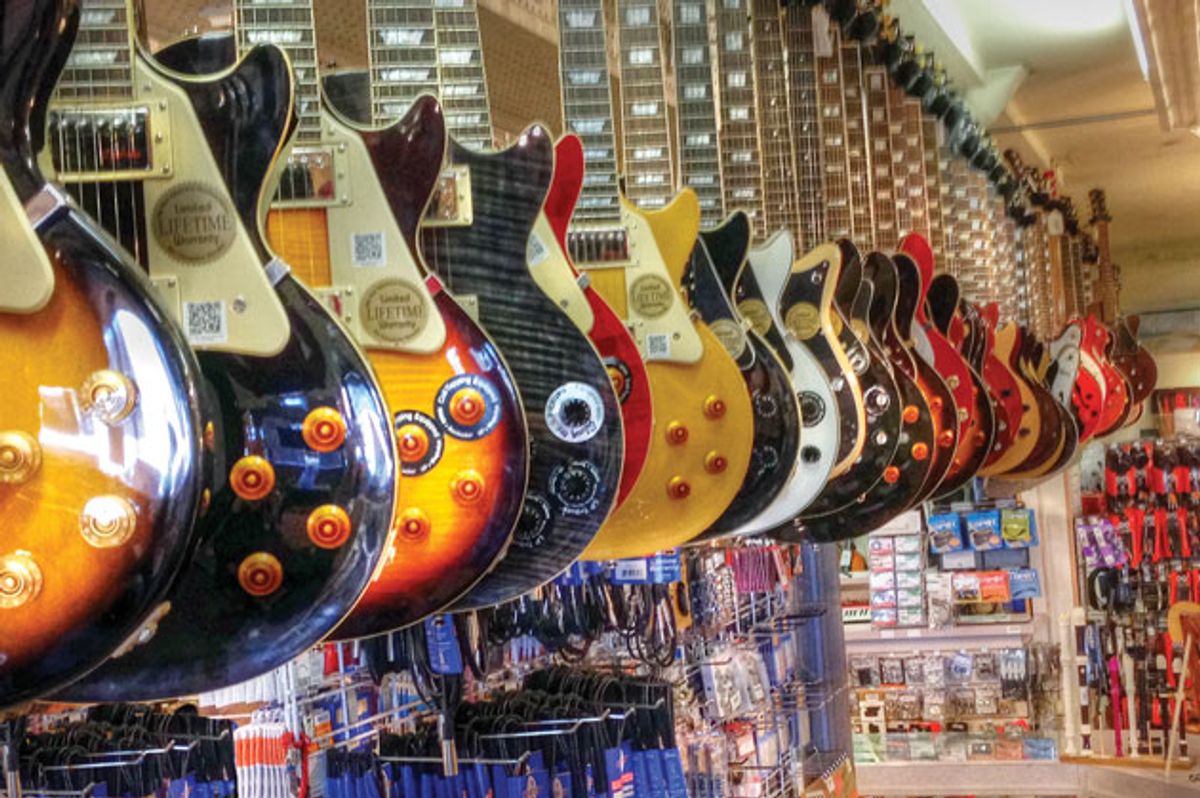
Some keen advice on shopping for an axe.
Guitar makers are always trying to please someone, whether it’s a customer or themselves. My preference is a true collaboration with an informed end user, but that’s not possible when it comes to guitars sold in shops. Guitar brands rely upon reputation, and to a lesser degree, shop personnel. No matter how you approach it, the truth is that someone is being sold in every human interaction.
Our perceptions are received through the filter of our beliefs and associations, a fact that marketers understand all too well and one that we tend to ignore on a conscious level. Children have been shown to actually enjoy carrots when served in a McDonald's bag. Wine “experts” have been fooled into thinking white wine was a red varietal when food coloring was added. Jimmy Page’s Telecaster and 12-watt combo amp sold boatloads of Les Pauls and Marshall stacks. Enjoyment is essentially a mental construct, so how can any of us know when we are being conned by our own senses?
A guitar is a complex equation because it’s a tool that performs a multitude of tasks with only a few basic things set in stone. It must stay in tune, intonate well up and down the fretboard, play easily enough, and produce a sound that is pleasing to the owner’s ear. Another requirement is that a guitar has to look right, and that’s where things can get tricky. A screwdriver or a chainsaw are simple in comparison. Even though there is brand loyalty in the chainsaw world, I doubt that there are posing mirrors at Husqvarna dealers.
If you’re guitar shopping in person, let’s take a look at the sound part of the equation. Taking a test drive with a new instrument at a dealership can be difficult, especially with electric guitars. You’re at the mercy of the shop’s acoustics, background noise, and amp selection. Unless you have brought a familiar baseline guitar with you for comparison, it is difficult to understand what you’re hearing.
Back in the days of stereo shops, it was a tactic of some speaker manufacturers to build more efficient products, so as to have a leg up on the competition in a side-by-side comparison. The ear interprets louder as fuller, and more efficient meant a louder speaker. And because the human brain perceives more volume as better up to a point, the same thinking found its way into the guitar and pickup game, too. Don’t be fooled by volume changes. Pay attention to the way a guitar is set up, because pickup height also affects volume.
It’s not easy to explore subtlety in a shop environment, but that’s exactly what you should do. A lot has been said about listening to the unplugged sound of an electric, and I’d also recommend it. But remember this: Although acoustic volume is somewhat important, it’s the tonality of the sound you should be listening for.
How much of the guitar is coming through? Can you hear the wood, or are you hearing a lot of string energy being reflected? Once you identify what the guitar is giving you off your hands, check to see if that’s what the pickups are delivering. A great pickup can help a guitar find its voice, but the wrong match can bury a guitar’s intrinsic tone. Believe it or not, I like to do this with eyes closed with my full concentration just on the sound, vibration, and the response to my hands. It’s a worthwhile exercise to practice this with the guitars you already own.
Like anything else, it takes time and effort to truly hear your instrument and identify the components and reasons you like or dislike it. Don’t just repeat the things you always play. Try to let the guitar’s sound and feel lead you. Is it taking you to a new and interesting place or is it just another version of what you already have?
If you lean on pedals to shape your sound, take that into account as well. It’s easy to bring a few pedals to a store. I’ve personally found that a cleaner, less-colored sound works well because it’s easier to add than subtract. If you find a guitar with a lot of personality on its own, that’s worth considering.
Better yet, if you can borrow an instrument to evaluate at home, do that. Some shops have a no-questions-asked return policy, and I think that’s a great option. It allows you to explore the nuances without the pressure and distraction of a public space.
However you go about choosing an instrument, if you prepare yourself properly—and listen honestly and openly—you can avoid buyer’s remorse later. Remember this: In a blind taste test, some people can’t tell the difference between chicken and steak, but that doesn’t mean that steak tastes like chicken.
